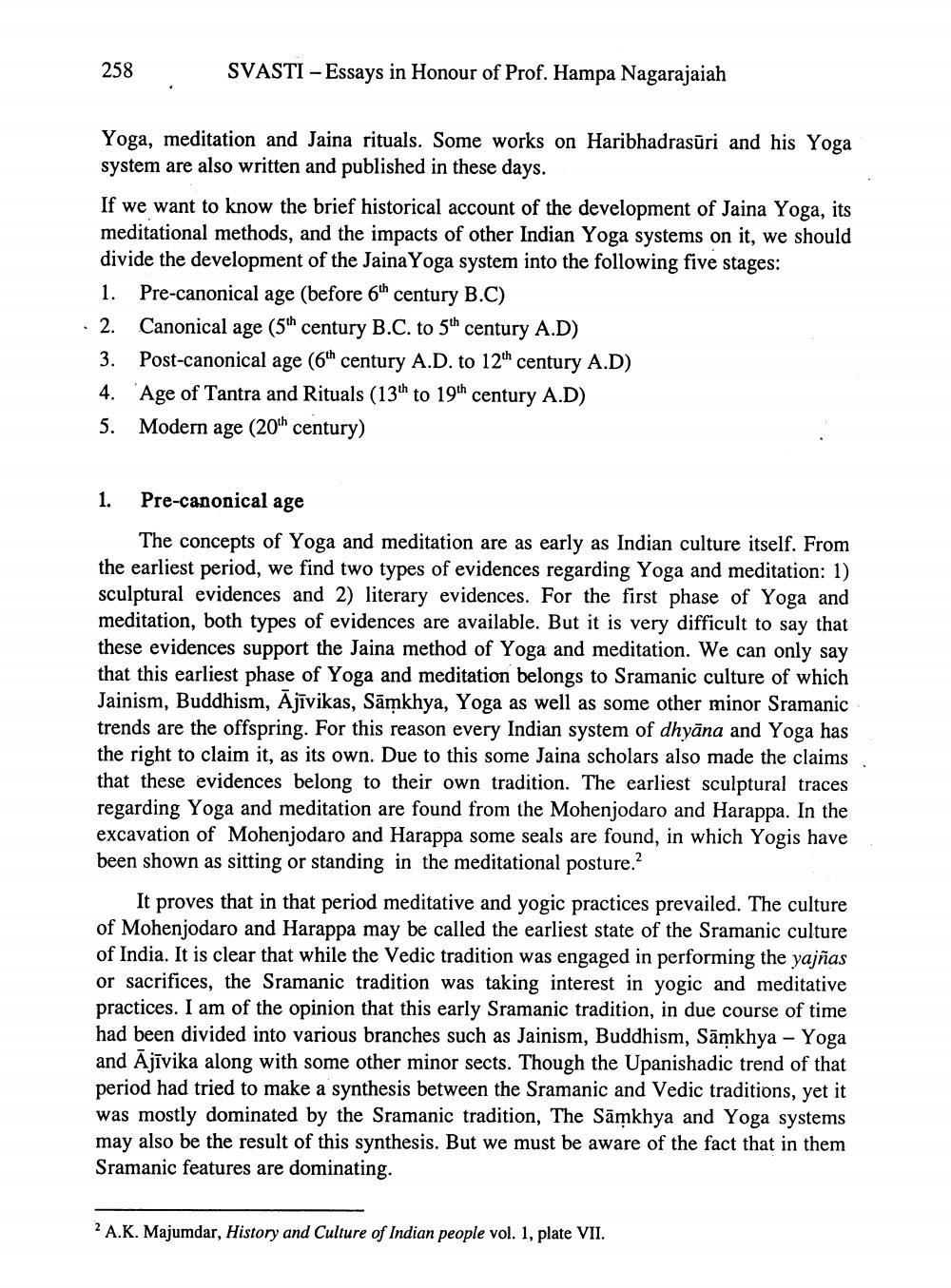________________
258
SVASTI - Essays in Honour of Prof. Hampa Nagarajaiah
Yoga, meditation and Jaina rituals. Some works on Haribhadrasūri and his Yoga system are also written and published in these days.
If we want to know the brief historical account of the development of Jaina Yoga, its meditational methods, and the impacts of other Indian Yoga systems on it, we should divide the development of the Jaina Yoga system into the following five stages:
1. Pre-canonical age (before 6th century B.C) • 2. Canonical age (51h century B.C. to 5th century A.D)
3. Post-canonical age (6ch century A.D. to 12th century A.D) 4. 'Age of Tantra and Rituals (13th to 19th century A.D) 5. Modern age (204h century)
1. Pre-canonical age
The concepts of Yoga and meditation are as early as Indian culture itself. From the earliest period, we find two types of evidences regarding Yoga and meditation: 1) sculptural evidences and 2) literary evidences. For the first phase of Yoga and meditation, both types of evidences are available. But it is very difficult to say that these evidences support the Jaina method of Yoga and meditation. We can only say that this earliest phase of Yoga and meditation belongs to Sramanic culture of which Jainism, Buddhism, Ājīvikas, Sāmkhya, Yoga as well as some other minor Sramanic trends are the offspring. For this reason every Indian system of dhyāna and Yoga has the right to claim it, as its own. Due to this some Jaina scholars also made the claims that these evidences belong to their own tradition. The earliest sculptural traces regarding Yoga and meditation are found from the Mohenjodaro and Harappa. In the excavation of Mohenjodaro and Harappa some seals are found, in which Yogis have been shown as sitting or standing in the meditational posture.?
It proves that in that period meditative and yogic practices prevailed. The culture of Mohenjodaro and Harappa may be called the earliest state of the Sramanic culture of India. It is clear that while the Vedic tradition was engaged in performing the yajñas or sacrifices, the Sramanic tradition was taking interest in yogic and meditative practices. I am of the opinion that this early Sramanic tradition, in due course of time had been divided into various branches such as Jainism, Buddhism, Samkhya - Yoga and Ājīvika along with some other minor sects. Though the Upanishadic trend of that period had tried to make a synthesis between the Sramanic and Vedic traditions, yet it was mostly dominated by the Sramanic tradition, The Sāmkhya and Yoga systems may also be the result of this synthesis. But we must be aware of the fact that in them Sramanic features are dominating.
2 A.K. Majumdar, History and Culture of Indian people vol. 1, plate VII.




